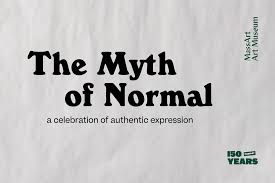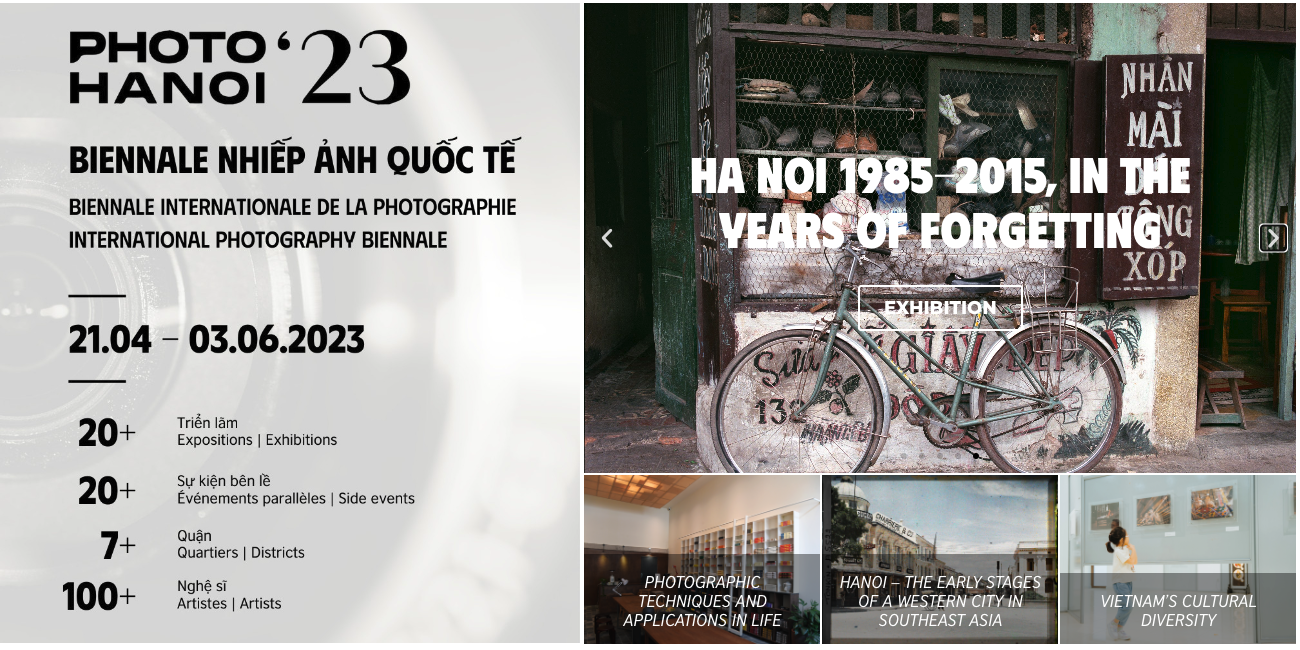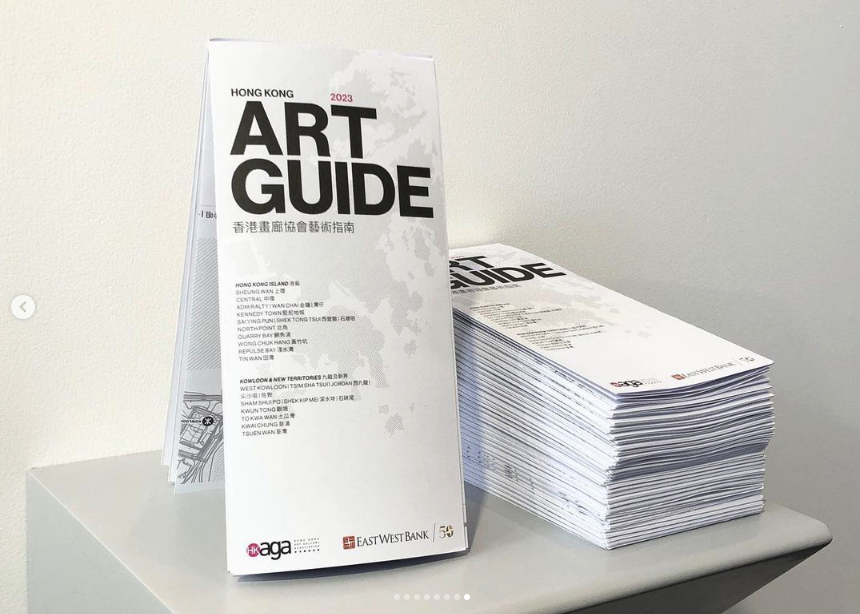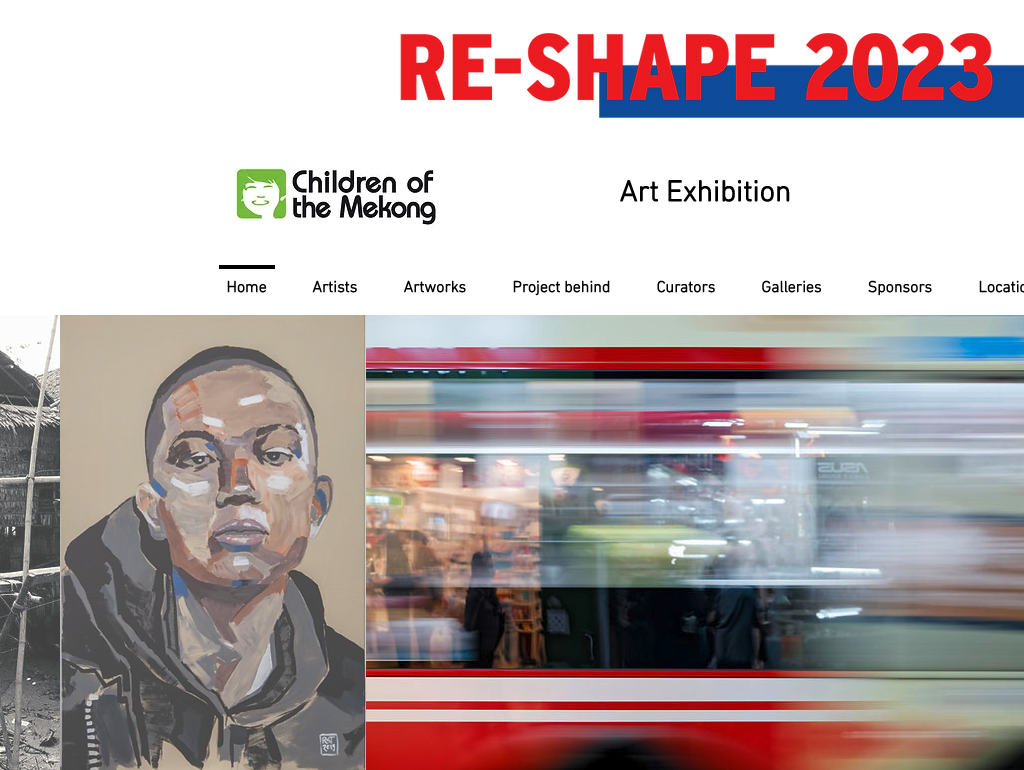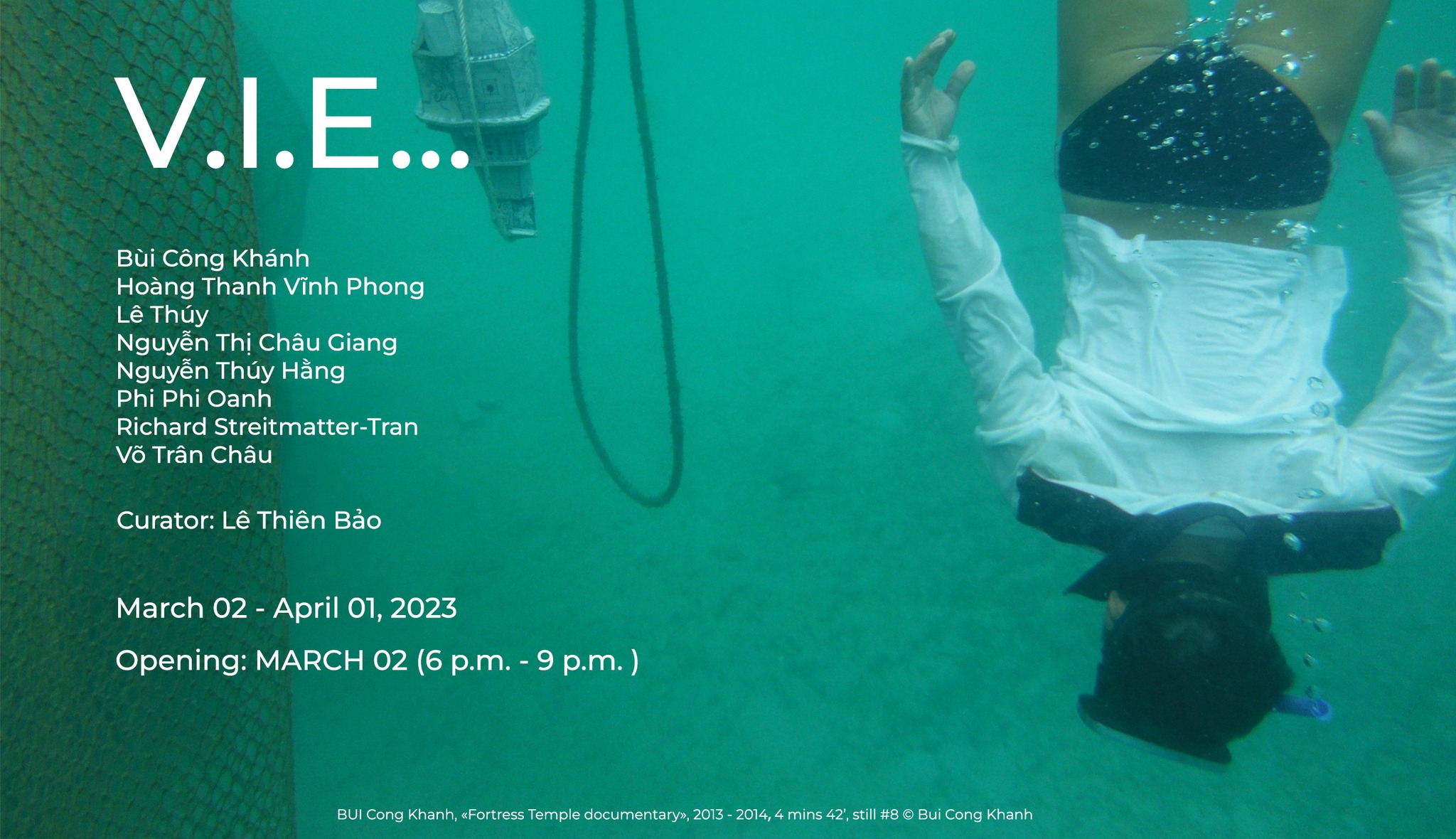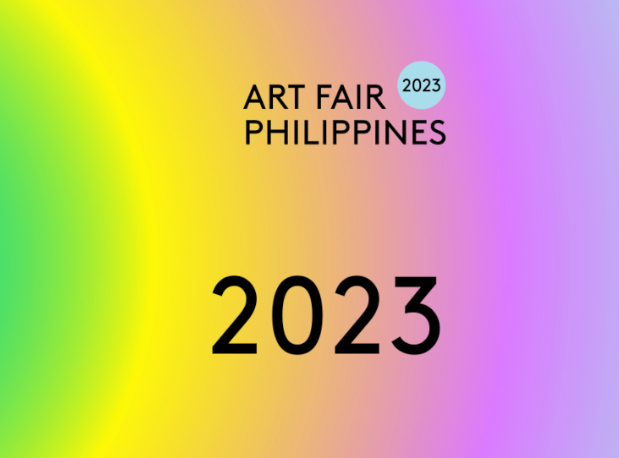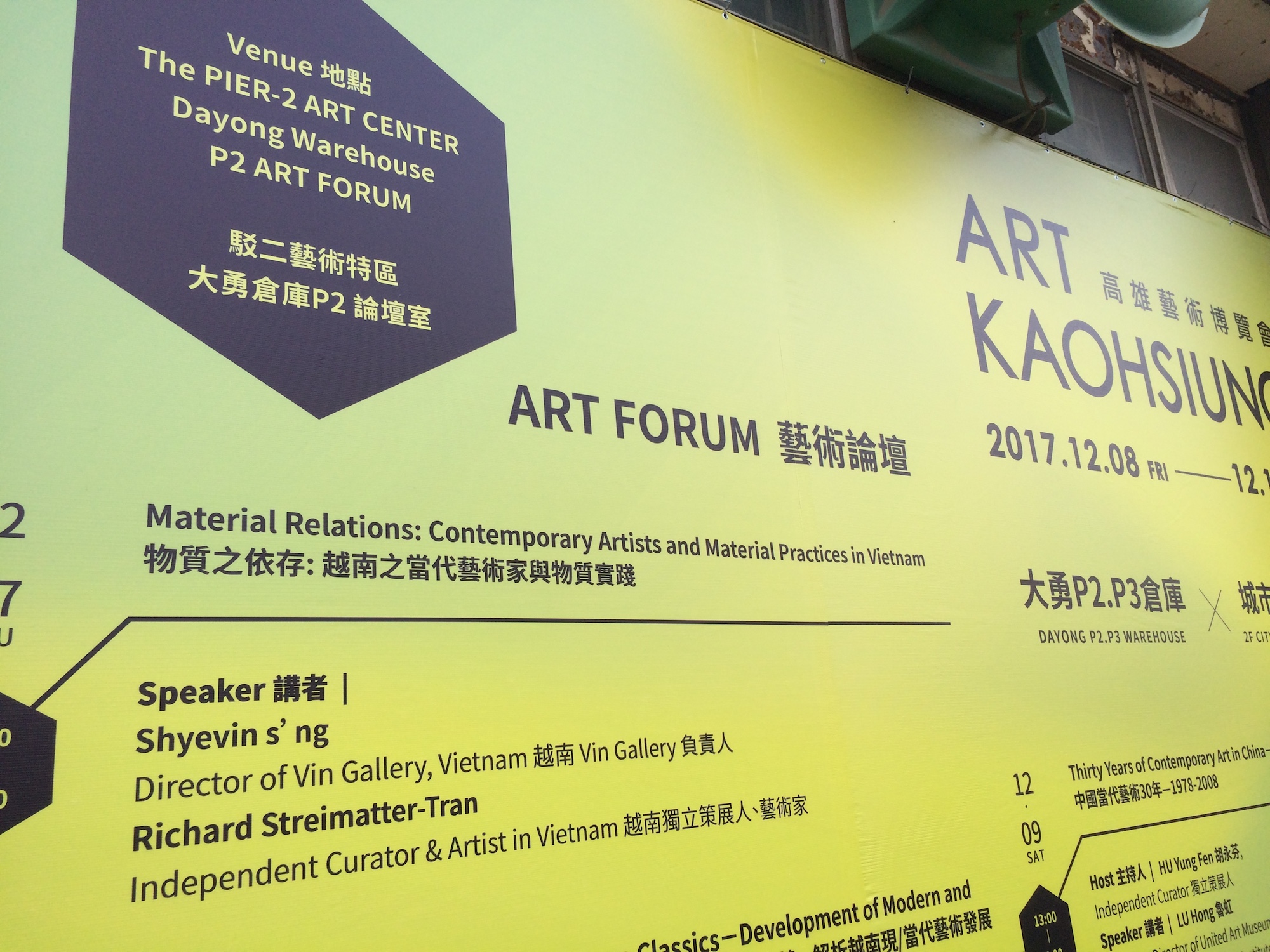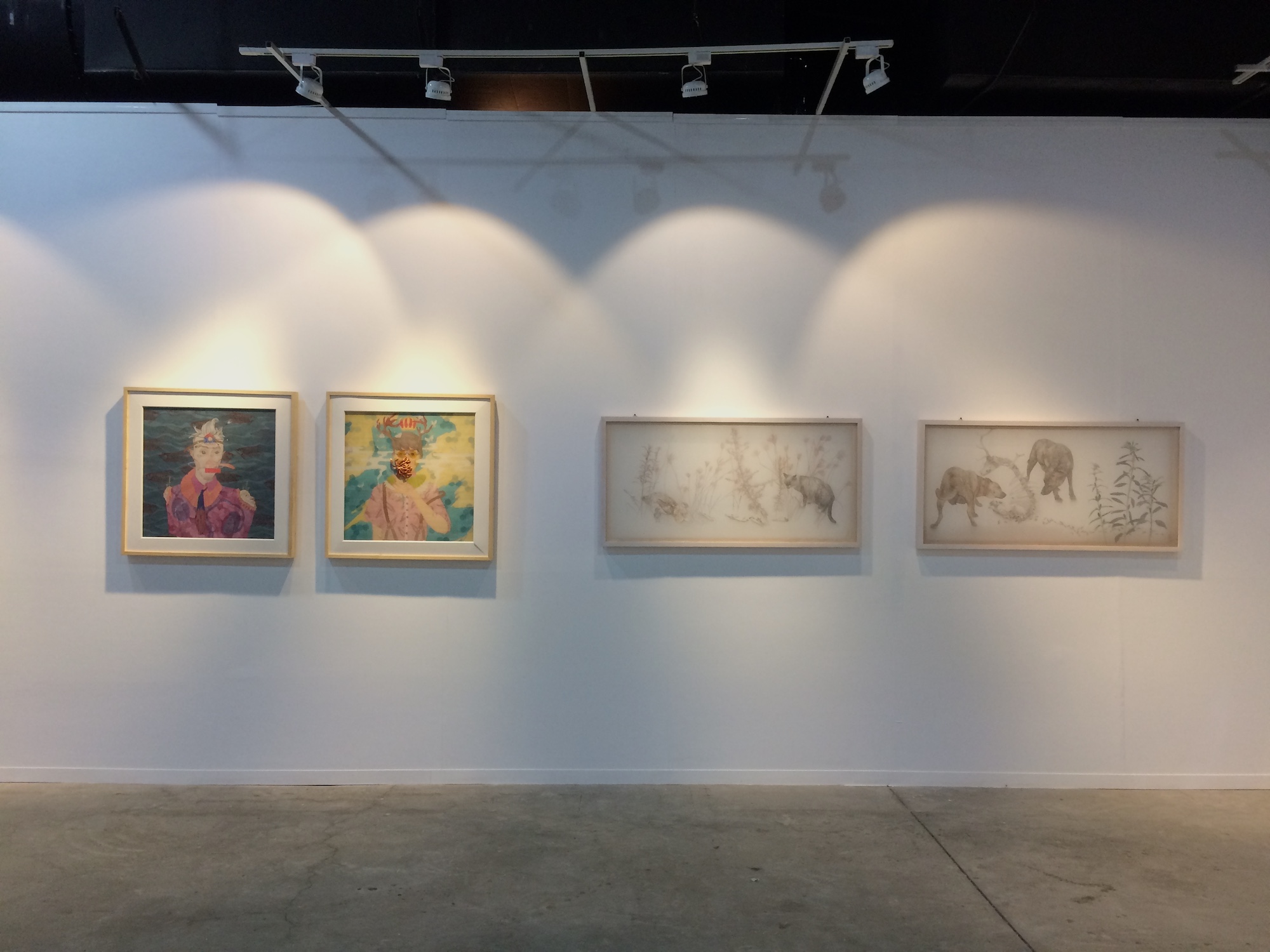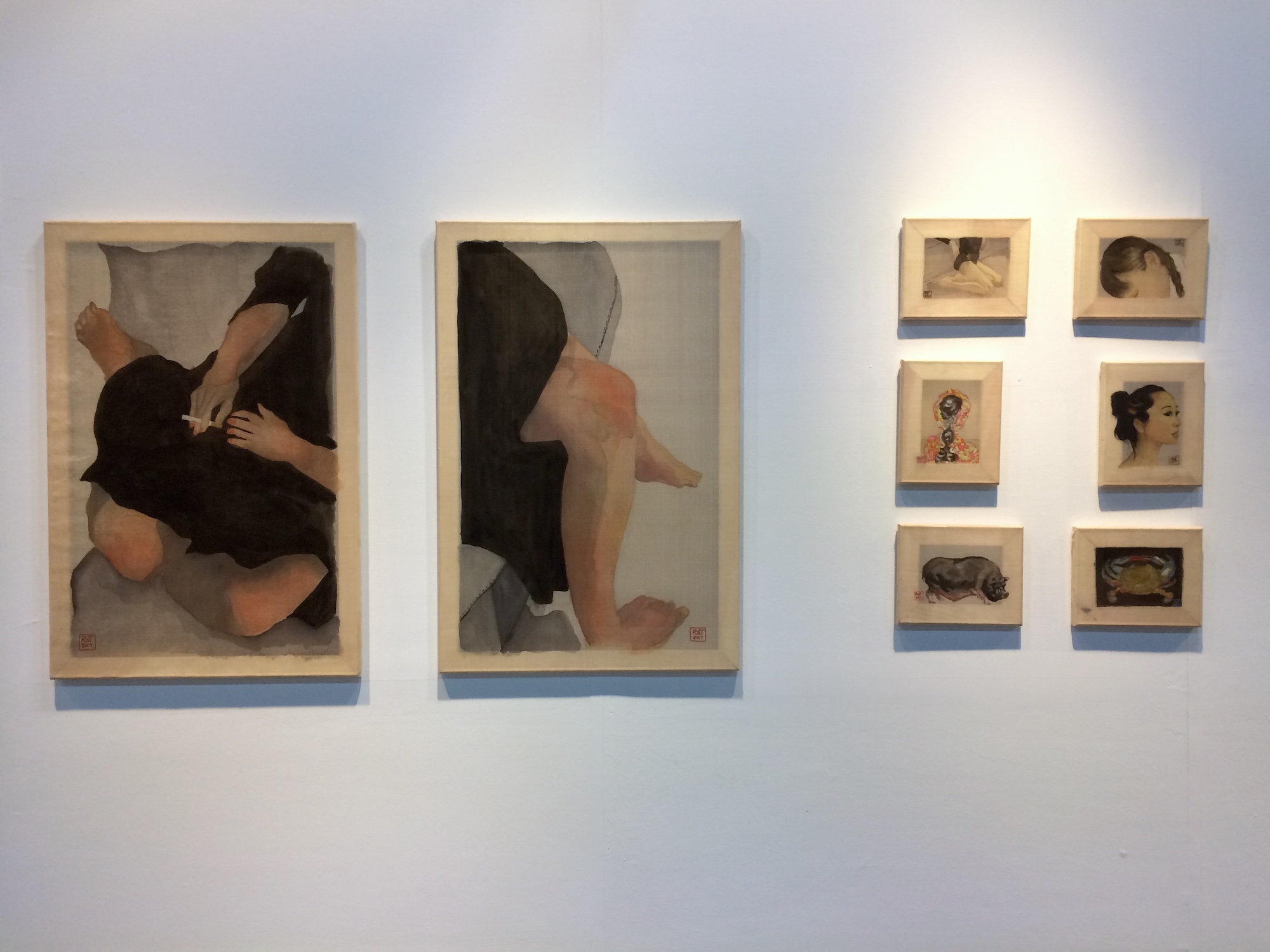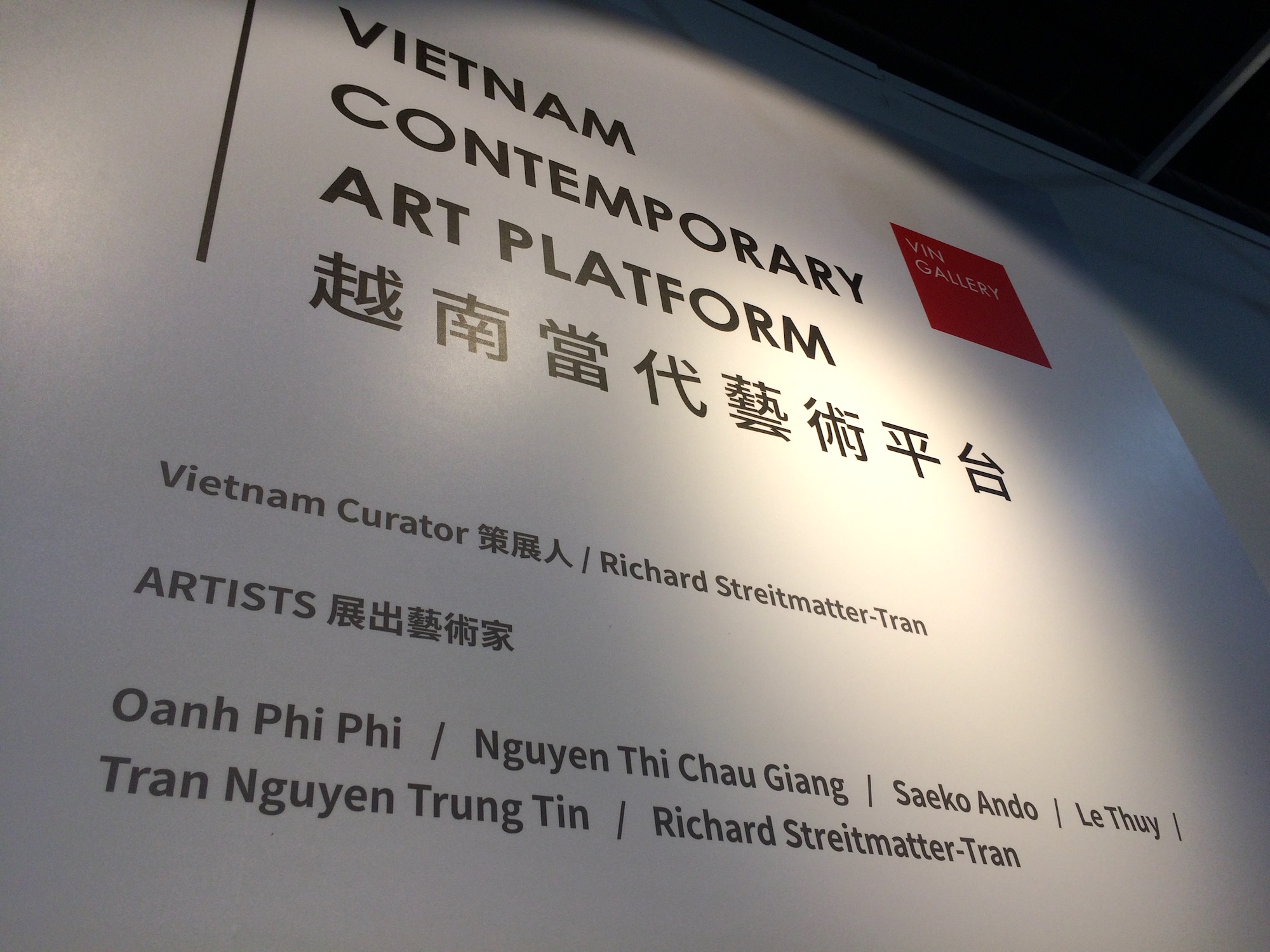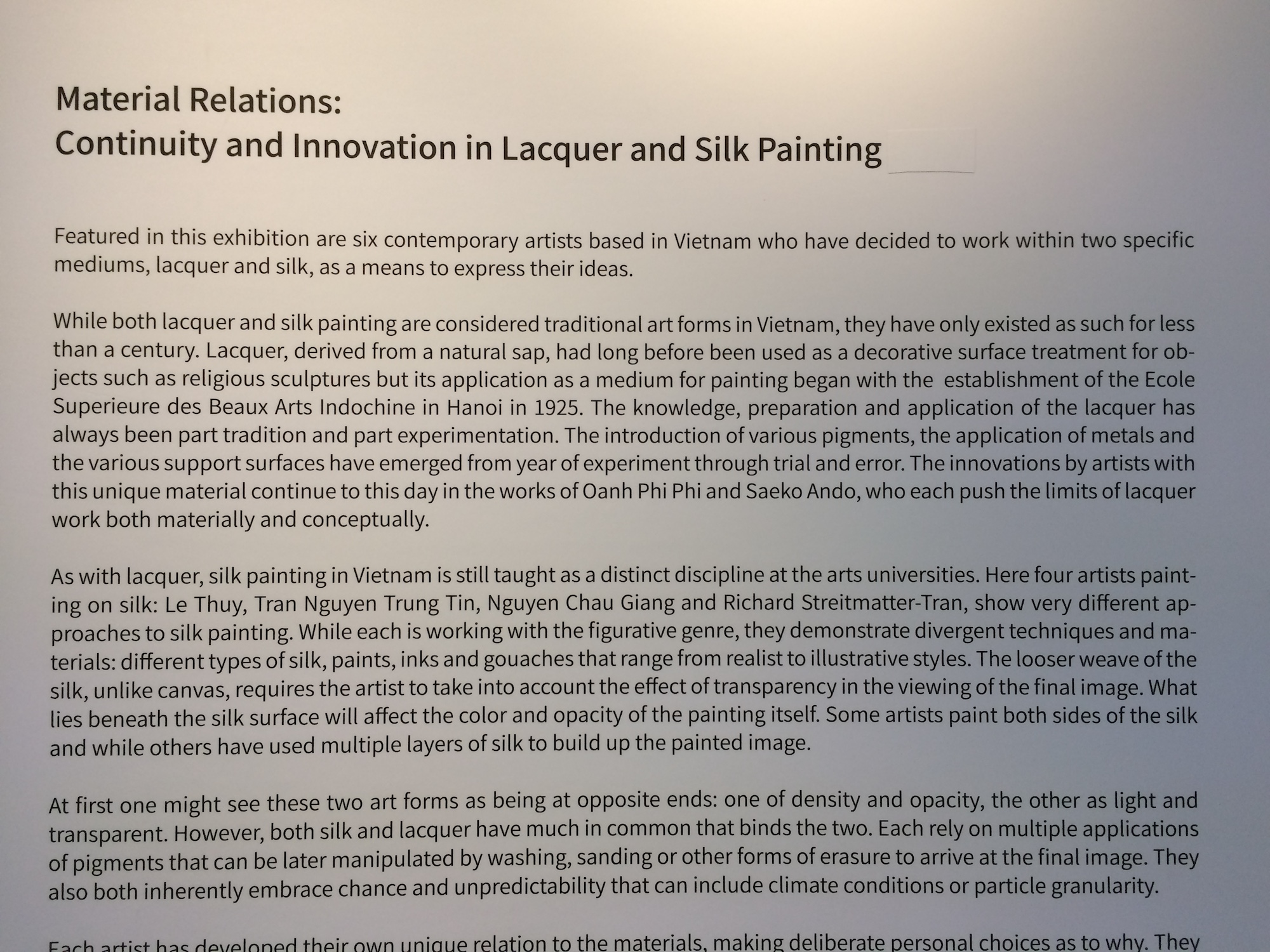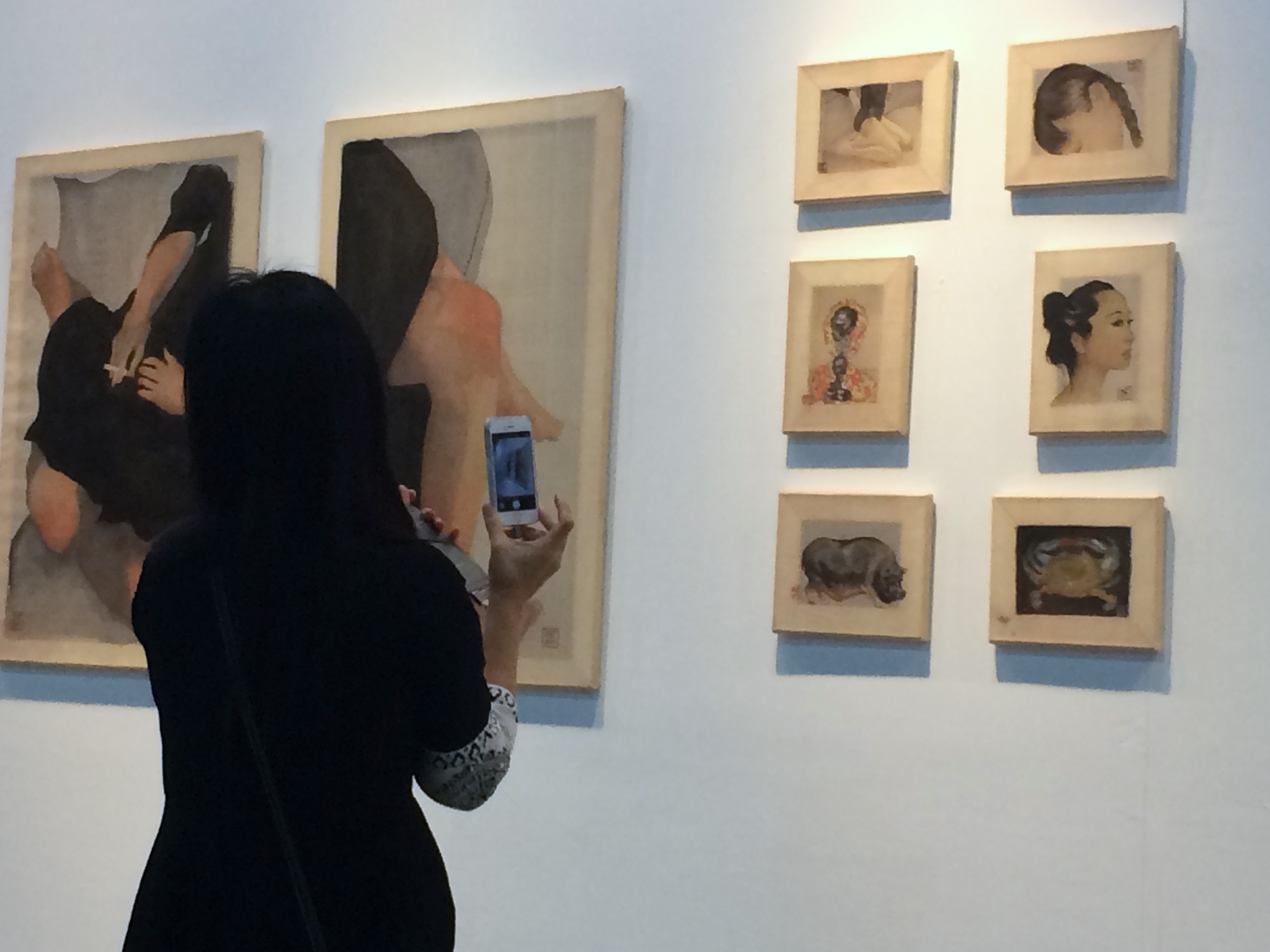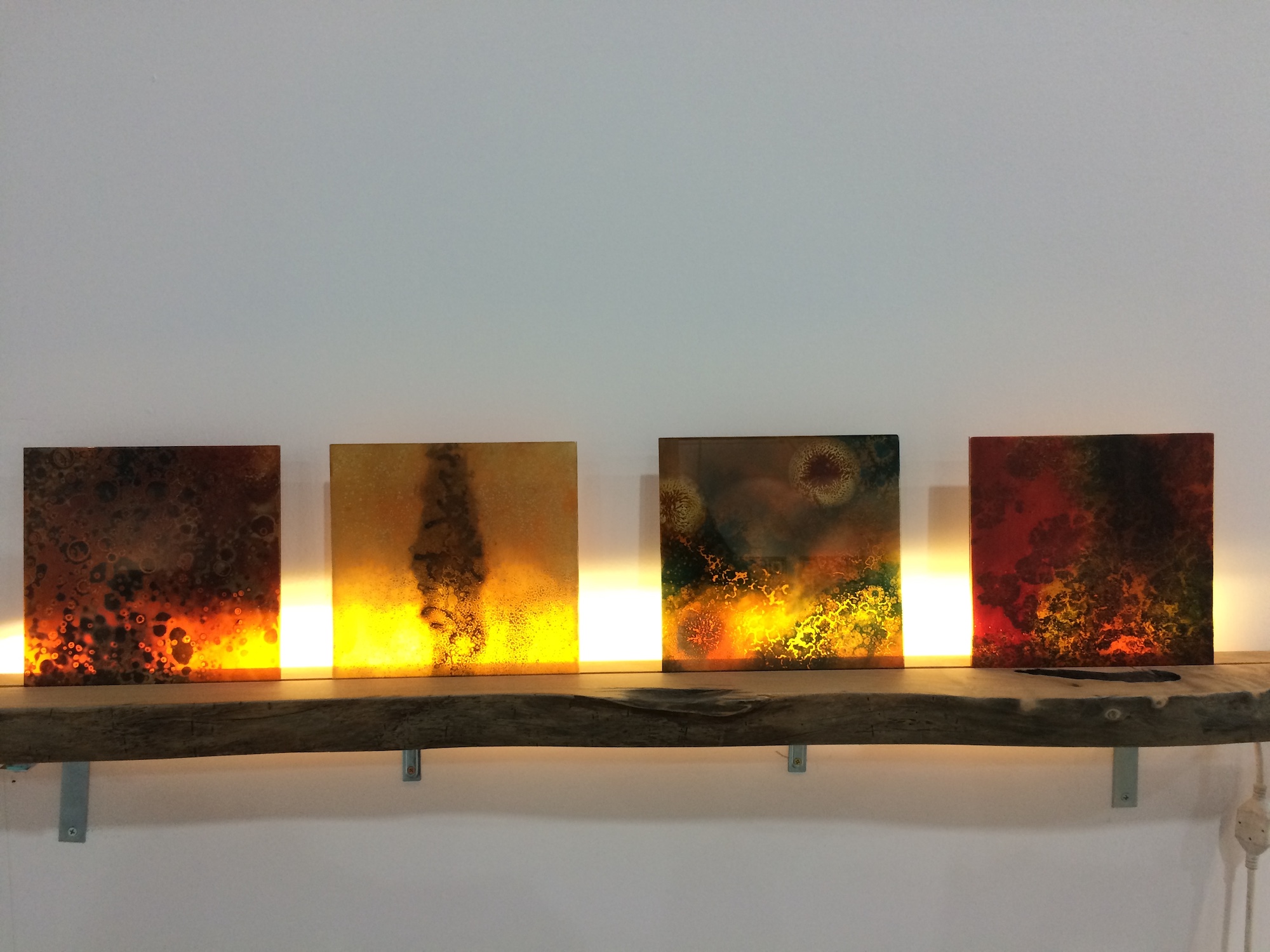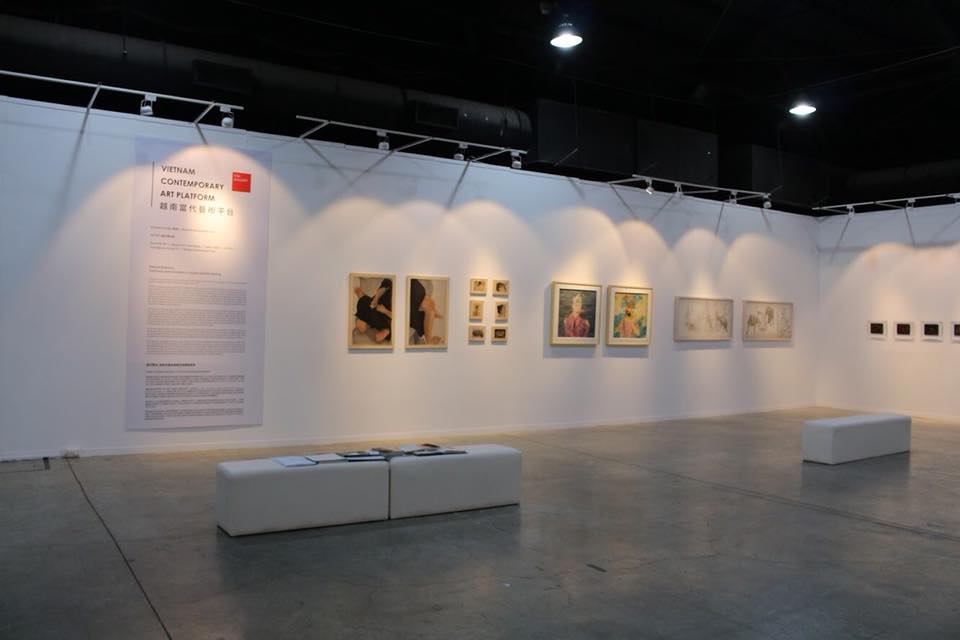Material Relations:
Continuity and Innovation in Lacquer and Silk Painting from Vietnam
International Curatorial Section at Art Kaohsiung
Artists:
Oanh Phi Phi
Nguyen Chau Giang
Saeko Ando
Le Thuy
Tran Nguyen Trung Tin
Richard Streitmatter-Tran
Featured in this exhibition are six contemporary artists based in Vietnam who have decided to work within two specific mediums, lacquer and silk, as a means to express their ideas.
While both lacquer and silk painting are considered traditional art forms in Vietnam, they have only existed as such for less than a century. Lacquer, derived from a natural sap, had long before been used as a decorative surface treatment for objects such as religious sculptures but its application as a medium for painting began with the establishment of the Ecole Superieure des Beaux Arts Indochine in Hanoi in 1925. The knowledge, preparation and application of the lacquer has always been part tradition and part experimentation. The introduction of various pigments, the application of metals and the various support surfaces have emerged from year of experiment through trial and error. The innovations by artists with this unique material continue to this day in the works of Oanh Phi Phi and Saeko Ando, who each push the limits of lacquer work both materially and conceptually.
As with lacquer, silk painting in Vietnam is still taught as a distinct discipline at the arts universities. Here four artists painting on silk: Le Thuy, Tran Nguyen Trung Tin, Nguyen Chau Giang and Richard Streitmatter-Tran, show very different approaches to silk painting. While each is working with the figurative genre, they demonstrate divergent techniques and materials: different types of silk, paints, inks and gouaches that range from realist to illustrative styles. The looser weave of the silk, unlike canvas, requires the artist to take into account the effect of transparency in the viewing of the final image. What lies beneath the silk surface will affect the color and opacity of the painting itself. Some artists paint both sides of the silk and while others have used multiple layers of silk to build up the painted image.
At first one might see these two art forms as being at opposite ends: one of density and opacity, the other as light and transparent. However, both silk and lacquer have much in common that binds the two. Each rely on multiple applications of pigments that can be later manipulated by washing, sanding or other forms of erasure to arrive at the final image. They also both inherently embrace chance and unpredictability that can include climate conditions or particle granularity.
Each artist has developed their own unique relation to the materials, making deliberate personal choices as to why. They have developed an intimate relation to the materials themselves, viewing their practice as being informed deeply by its materiality through research and making. While there is an established collector base for modernist era works in lacquer and silk, appreciation for artworks in these mediums has much potential to grow among contemporary collectors. We can now appreciate how artists now are reimagining material knowledge and applying it to their own conceptual inclinations while in turn contributing to the future evolution of contemporary lacquer and silk painting.
Richard Streitmatter-Tran
DETAILS
2017
Material Relations: Continuity and Innovation in Lacquer and Silk Painting
Curated by R. Streitmatter-Tran for Vin Gallery (HCMC)
Art Kaohsiung 2017, Taiwan.
